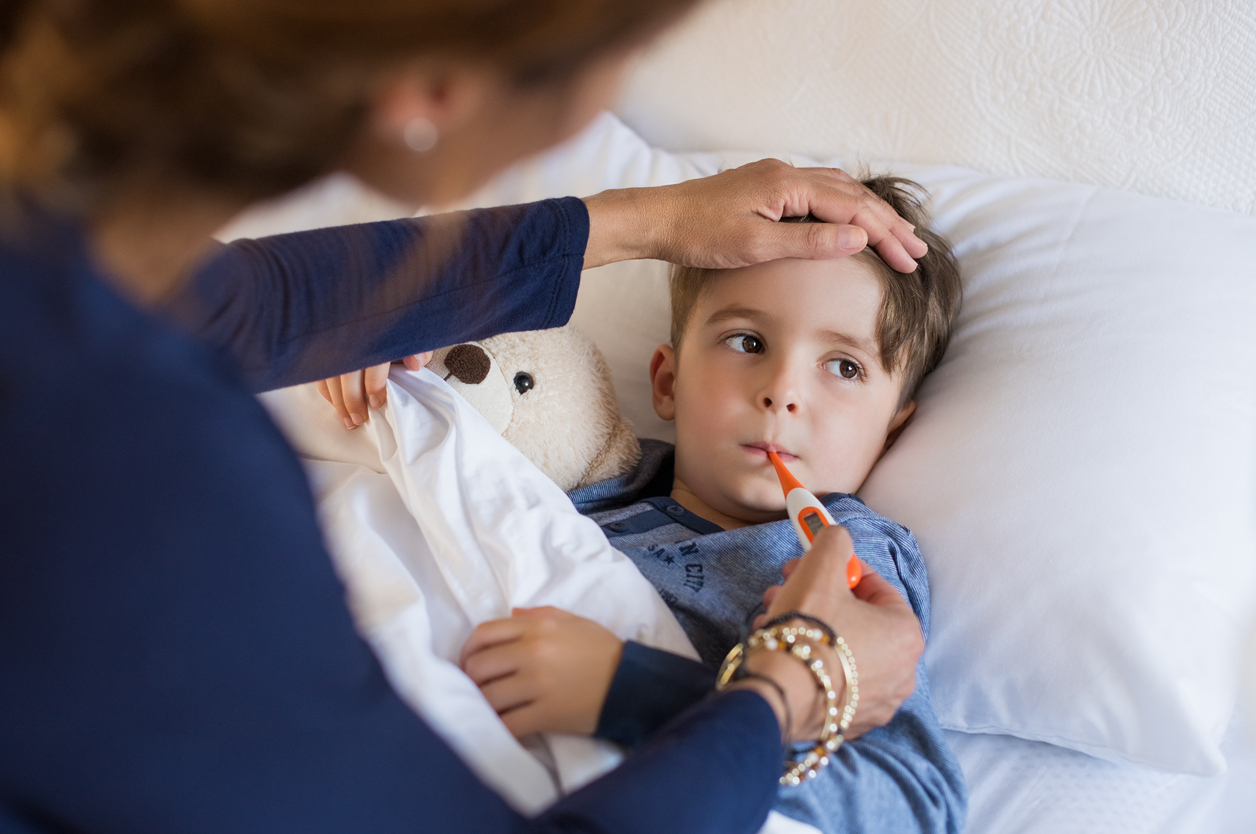Fevers can be scary – especially when they show up unexpectedly. Many parents find themselves unsure of what to do in the midst of this situation, without escalating their fear to panic. Yet, most of the time it is wasted worry.
Taking the time to understand pediatric fever will help you to make clear decisions when the moment arises. Should you call the doctor? Visit urgent care? Or seek help from your local hospital’s emergency room?
Let’s look at how fevers can be safely managed at home and identify when it is time to seek medical help.
What Causes a Fever?
Fevers are usually a sign that your child is battling an infection or illness. The internal thermostat we all have stays at a normal level most of the time, which falls at about 98.6℉. When it rises significantly above this, it is often because something is going on internally — but what?
Fever in children is often due to viruses, infections, and various illnesses. This could be a cold, the flu, an ear infection, strep throat, and so forth. Keep in mind that heat exhaustion and bad sunburns can also cause fever.
These are situations that will commonly begin to get better on their own as the body begins to fight. The rise in temperature is all part of the it’s defense in fighting back as bacteria and viruses struggle to survive in warm conditions.
What are the Signs of a Fever in Young Children?
Children will respond to fevers in their own unique ways. It will depend on the age of the child, the degree of the temperature, and what is going on within the body. However, a few things you can look for that may signal it is time to take your child’s temperature are:
- They are feeling hot
- Shivering
- Have a loss of appetite
- Flushed cheeks
- Increased heart rate
- Fast breathing
- Body aches
- Fussy behavior
If your child is exhibiting any of these symptoms or is acting very lethargic, take their temperature to check for a fever.
Managing the Fever at Home
A fever is often referred to as a temperature equal to or greater than 100.4℉. Normal fevers can usually be managed at home with ease as they tend to clear up in a day or two. Here are a few tips to get you through it at home.
- Make sure your child is drinking plenty of fluids – and keep an eye on signs of dehydration
- Do not add extra layers of clothing to your child. If they are cold, use a blanket so that they are comfortable
- Acetaminophen can work to lower a fever, just be sure you know the proper dosage before administering. You can always contact your doctor or pharmacist to confirm.
- Monitor your child’s temperature
Most importantly, stay with your child and comfort them through the fever. They should get their appetite back and feel more like themselves in a day or two.
When to Seek Medical Help for a Fever
Babies younger than 3 months who have temperatures of 100.4℉ or higher should always be seen by a doctor without delay. Otherwise, fevers that reach 104℉ should warrant medical attention.
If your child has a fever and is exhibiting any of the following symptoms, seek medical attention. Contact your doctor right away or seek medical attention at an urgent care center or ER. Don’t panic, but rather remain calm and have your child seen by a medical professional.
- Extremely lethargic
- Very irritable
- Difficulty breathing
- Lots of pain
- Areas of redness or swelling
- Taking in very little fluids, resulting in decreased urine output
You will also want to seek medical help for a fever if it has stuck around for more than 3 days for children over 2 years of age or longer than 24 hours in a child younger than 2 years of age.
If your child has a high fever due to being in a hot place, such as a car, or has been overheated—seek medical attention immediately.
Advocare Haddon Pediatric Group provides pediatric medical services to young patients in the South Jersey area – from cradle through college.
